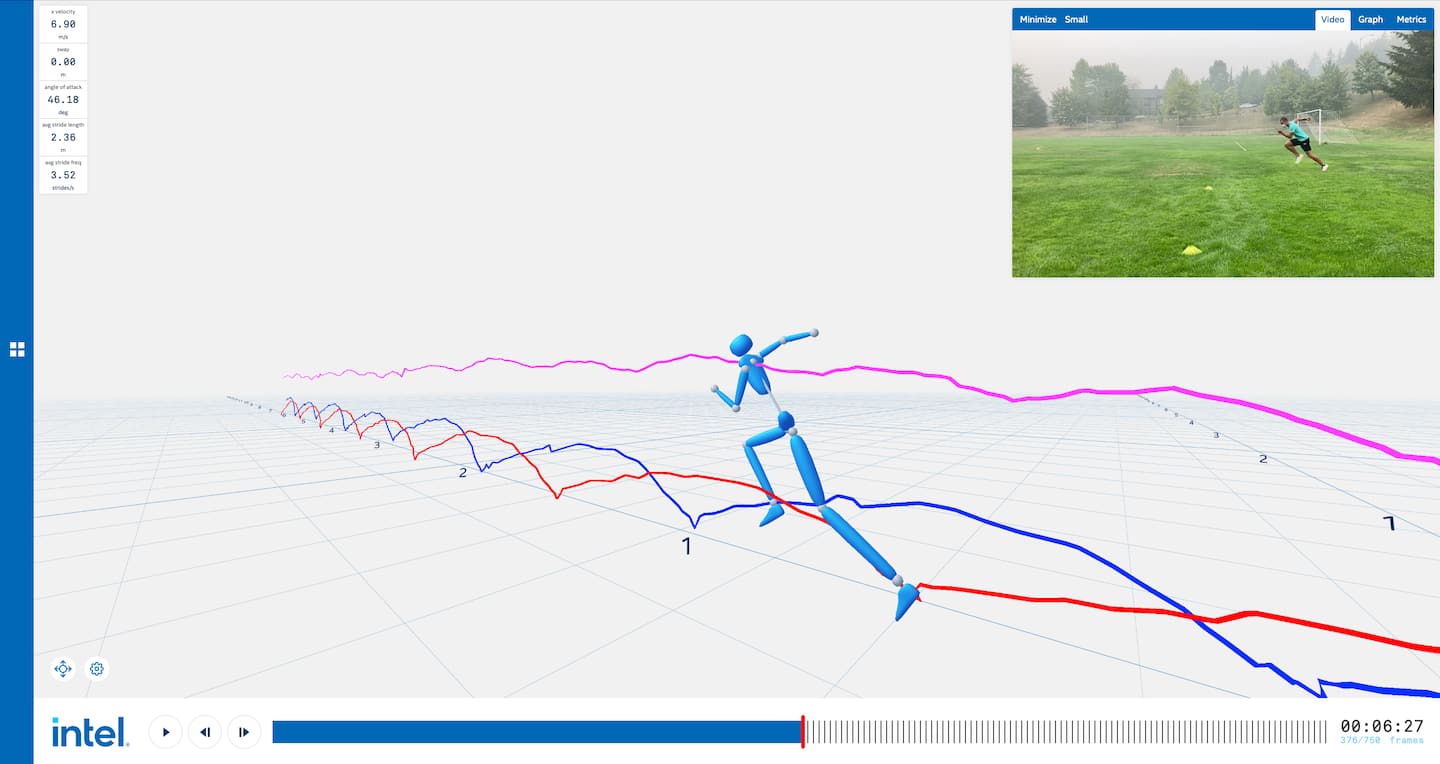NFL hopefuls use AI for a leg up ahead of predraft season

The information can be used to help players shave seconds off their sprint times or learn about unintentional body movements that hurt their performance. The training camp revealed news of the pilot Thursday, a day before the start of college pro days, which take place at various campuses through April 9. The predraft events are held annually for NFL hopefuls to show scouts what they bring to the table.
Traditionally, coaches rely on their eyes and years of experience to instruct athletes on how to perform more efficiently. Intel’s artificial intelligence software ads another tool to their arsenal by taking what may be unmeasurable visually and turning it into something that’s actionable.
“Instead of relying solely on human vision, we’re now using computer vision,” said Craig Friedman, senior vice president of EXOS’ performance innovation team. “This concept of taking things that were previously invisible and making them visible to the coach is super powerful.”
The training platform is hands-free for athletes.
Essentially, coaches have set up iPhones on tripods to capture how players maneuver as they’re performing. The footage is then run through Intel’s deep-learning software, which works to identify key points on the athlete’s body, creates a digital skeleton, analyzes how it moves and translates that data into images and graphs for coaches to use.
EXOS says about 30 athletes have trained using the software so far. Last year, without the software, 83 of the training camp’s athletes were picked by the NFL. Intel, a $77.9 billion American tech corporation, originally developed the tracking for TV commentators covering the Olympics, but its engineers saw applications for other sports arenas as well.
For athletes, the tracking software may fill a gap that sometimes exists between how they think they performed and what a coach tells them they did. Instead of guessing whether their foot placement was correct, the software can show precisely what happened.
“When I was running the 100-meter dash, I’d work with my coach to make adjustments to shave off fractions of a second, but it was all by feel. Sometimes it worked, sometimes it didn’t, because I didn’t fully know what my body was actually doing,” said Ashton Eaton, an Olympic gold medalist who works as an Intel product development engineer.
Athlete tracking has limitations though. It doesn’t tell coaches or athletes how to correct issues. It only highlights what the athlete did do. It’s up to coaches to determine how to use the information.
“I don’t know that we’re ever going to take the place of the coach, and I don’t think that that’s necessarily always the role of technology,” Friedman said. “But it can make a decent practitioner really good, and it can take a good practitioner and make them great.”






